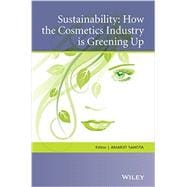Sustainability has come to the fore in the cosmetics and personal care industry. Rising ethical consumerism and the need for resource efficiency are making cosmetic companies – small, independent firms to global giants – take steps towards sustainable development.
Sustainability: How the Cosmetics Industry is Greening Up discusses the growing importance of sustainability in the cosmetics industry, highlighting the various ways organisations can address the economic, environmental and social aspects. How can the cosmetics industry make a difference in terms of ingredients, formulations, packaging, CSR, operations, and green marketing?
Topics covered include:
- Environmental and social impacts of cosmetic products
- Ethical sourcing and biodiversity
- Renewable energy and waste management
- Green formulations and ingredients
- Green marketing issues and consumer behaviour
- Green standards, certification schemes and indices in the cosmetics industry
Industry experts share their experiences on how they are tackling the challenges of sustainability: from raw material procurements, manufacturing, business processes, to distribution and marketing to consumers. The book concludes with some future growth projections; what are some of the shortcomings in sustainability in the cosmetics industry and what can we expect to see in the future?
Sustainability: How the Cosmetics Industry is Greening Up discusses business and technical issues in all areas of sustainable product development, from sourcing ingredients, to formulation, manufacture and packaging.
Covering a diverse range of subjects, this book appeals to professionals in many key sectors of the cosmetics and personal care industry; cosmetic chemists, formulation scientists, R&D directors, policy makers, business and marketing executives. It is also of relevance to academic researchers working in cosmetic chemistry and sustainable process development.








